



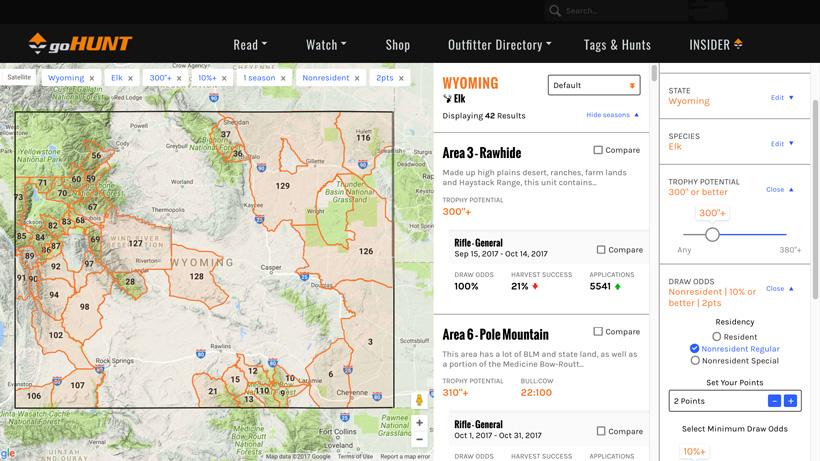
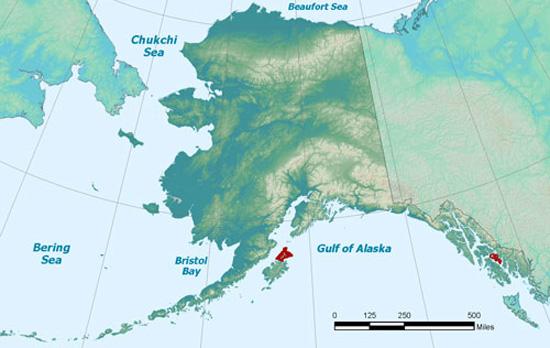
Alaska elk range. Source: Alaska Department of Fish and Game
Year | 2013 |
|---|---|
Number ofhunters | 302 |
Elk taken(bulls & cows) | 45 |
Success | 15% |
Year | 2014 |
Number ofhunters | 304 |
Elk taken(bulls & cows) | 67 |
Success | 22% |
Year | 2015 |
Number ofhunters | 298 |
Elk taken(bulls & cows) | 85 |
Success | 27% |
Year | Number ofhunters | Elk taken(bulls & cows) | Success |
|---|---|---|---|
2013 | 302 | 45 | 15% |
2014 | 304 | 67 | 22% |
2015 | 298 | 85 | 27% |
Year | 2013 |
|---|---|
Number ofhunters | 16,180 |
Elk taken* | 9,506 |
Success | 38% |
Year | 2014 |
Number ofhunters | 15,986 |
Elk taken* | 8,032 |
Success | 39% |
Year | 2015 |
Number ofhunters | 15,946 |
Elk taken* | 11,633 |
Success | 41% |
Year | Number ofhunters | Elk taken* | Success |
|---|---|---|---|
2013 | 16,180 | 9,506 | 38% |
2014 | 15,986 | 8,032 | 39% |
2015 | 15,946 | 11,633 | 41% |
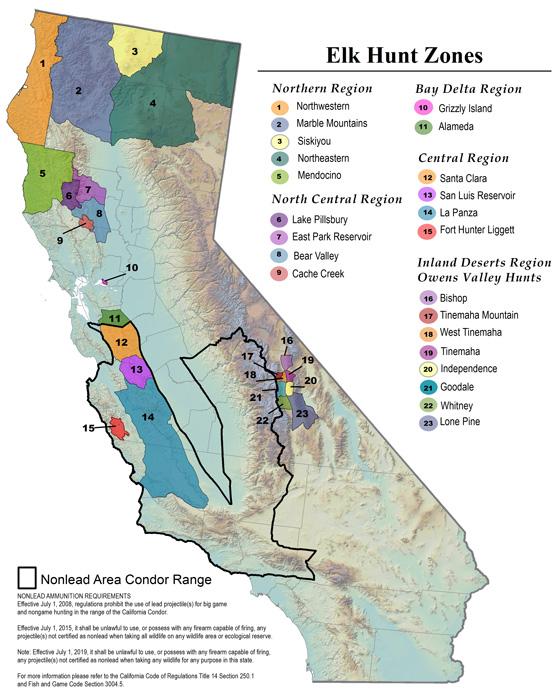
2017 California elk hunting zones
Year | 2010 |
|---|---|
Number ofhunters | 214,536 |
Elk taken* | 48,018 |
Success | 22% |
Year | 2011 |
Number ofhunters | 211,392 |
Elk taken* | 43,480 |
Success | 21% |
Year | 2012 |
Number ofhunters | 215,326 |
Elk taken* | 43,490 |
Success | 20% |
Year | 2013 |
Number ofhunters | 219,166 |
Elk taken* | 43,606 |
Success | 20% |
Year | 2014 |
Number ofhunters | 217,769 |
Elk taken* | 41,900 |
Success | 19% |
Year | 2015 |
Number ofhunters | 221,274 |
Elk taken* | 44,852 |
Success | 20% |
Year | 2016 |
Number ofhunters | 223,745 |
Elk taken* | 39,306 |
Success | 18% |
Year | Number ofhunters | Elk taken* | Success |
|---|---|---|---|
2010 | 214,536 | 48,018 | 22% |
2011 | 211,392 | 43,480 | 21% |
2012 | 215,326 | 43,490 | 20% |
2013 | 219,166 | 43,606 | 20% |
2014 | 217,769 | 41,900 | 19% |
2015 | 221,274 | 44,852 | 20% |
2016 | 223,745 | 39,306 | 18% |
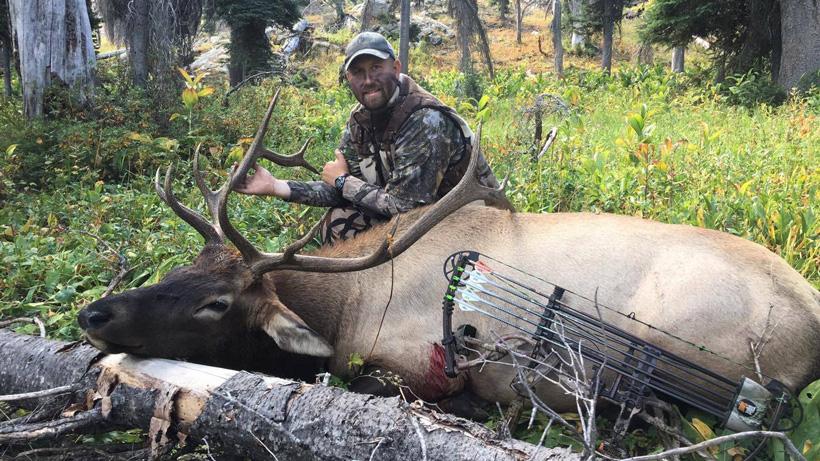
Justin Jordan and a great Idaho OTC archery bull.
Year | 2013 |
|---|---|
Number ofhunters | 88,978 |
Elk taken | 16,226 |
Success | 18% |
Year | 2014 |
Number ofhunters | 96,212 |
Elk taken | 20,076 |
Success | 21% |
Year | 2015 |
Number ofhunters | 103,213 |
Elk taken | 23,847 |
Success | 23% |
Year | 2016 |
Number ofhunters | 101,912 |
Elk taken | 22,504 |
Success | 22% |
Year | Number ofhunters | Elk taken | Success |
|---|---|---|---|
2013 | 88,978 | 16,226 | 18% |
2014 | 96,212 | 20,076 | 21% |
2015 | 103,213 | 23,847 | 23% |
2016 | 101,912 | 22,504 | 22% |
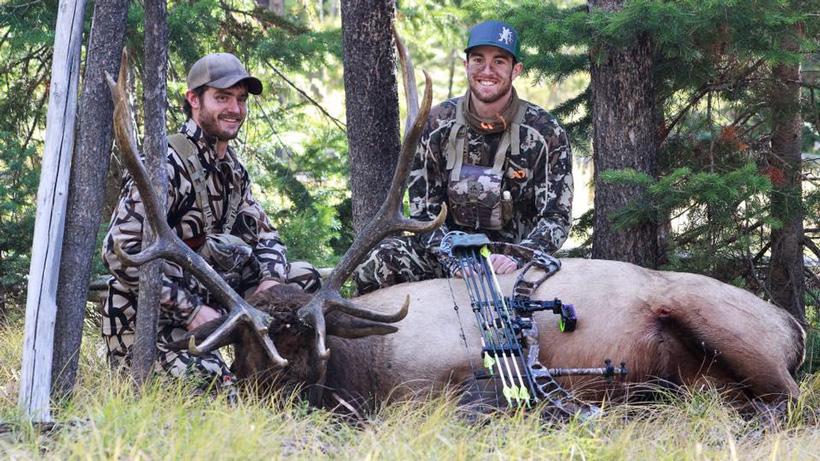
Colton and Aaron Johnston of Behind the Tines with a great Montana archery bull.
Year | 2013 |
|---|---|
Number ofhunters | 107,568 |
Elk taken(bulls & cows) | 20,154 |
Success | 19% |
Year | 2014 |
Number ofhunters | 107,663 |
Elk taken(bulls & cows) | 25,736 |
Success | 24% |
Year | 2015 |
Number ofhunters | 113,959 |
Elk taken(bulls & cows) | 30,921 |
Success | 27% |
Year | Number ofhunters | Elk taken(bulls & cows) | Success |
|---|---|---|---|
2013 | 107,568 | 20,154 | 19% |
2014 | 107,663 | 25,736 | 24% |
2015 | 113,959 | 30,921 | 27% |
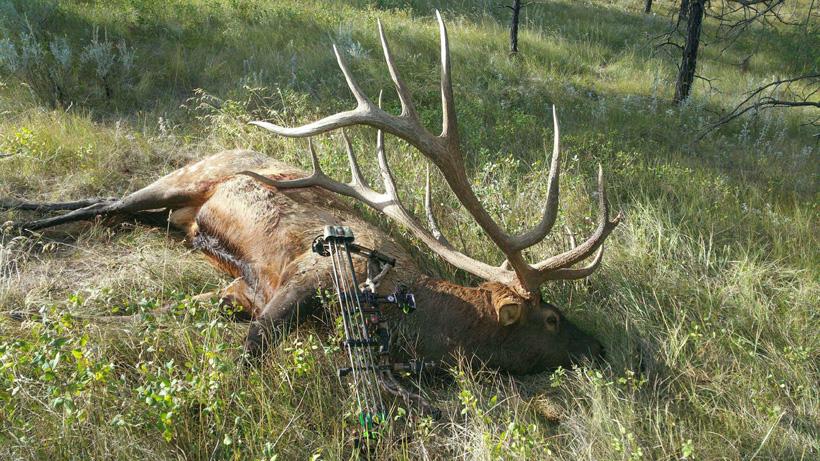
New 430 0/8" world record typical elk taken in Montana by Steve Felix. Source: B&C
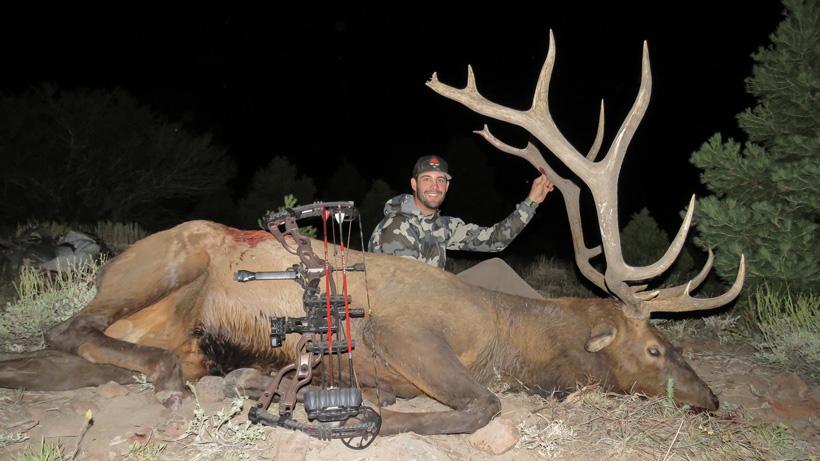
Blake Sartini Jr. beat the odds and drew a 2016 archery bull tag in Nevada and hunted with 7L Outfitters — A goHUNT Business Member
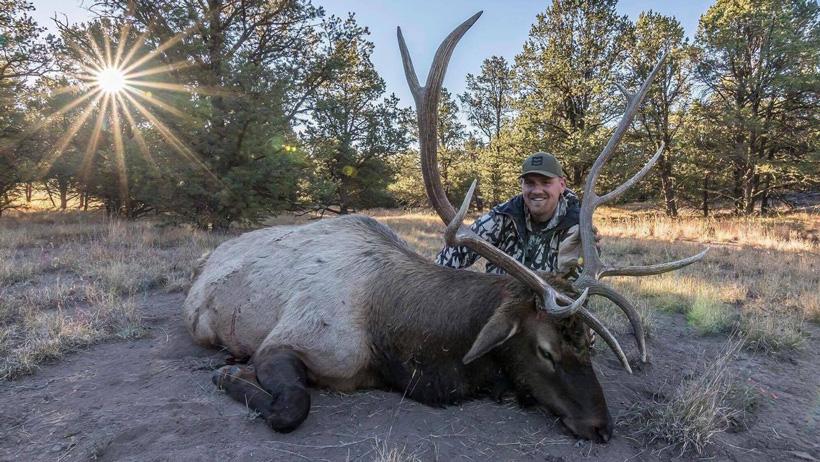
Jason Phelps of Phelps Game Calls and a New Mexico muzzleloader bull.
Year | 2013 |
|---|---|
Number ofhunters | 29,637 |
Elk taken(bulls & cows) | 14,119 |
Success | 48% |
Year | 2014 |
Number ofhunters | 30,002 |
Elk taken(bulls & cows) | 14,234 |
Success | 47% |
Year | 2015 |
Number ofhunters | 28,820 |
Elk taken(bulls & cows) | 14,555 |
Success | 51% |
Year | Number ofhunters | Elk taken(bulls & cows) | Success |
|---|---|---|---|
2013 | 29,637 | 14,119 | 48% |
2014 | 30,002 | 14,234 | 47% |
2015 | 28,820 | 14,555 | 51% |
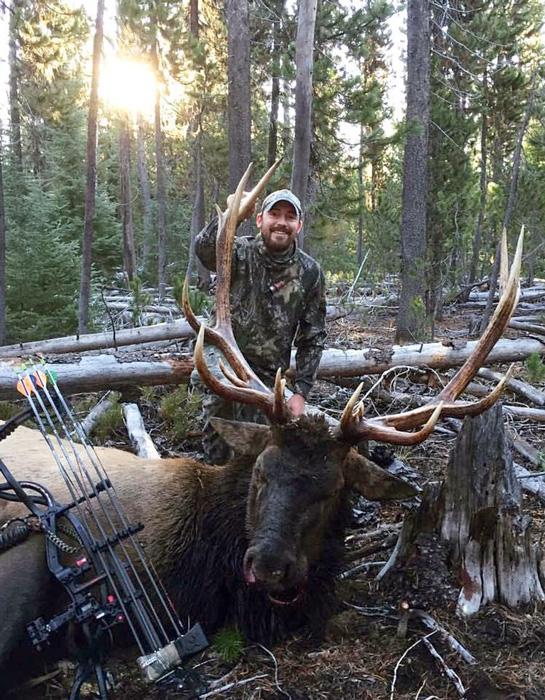
Jimmy Hurley and a beautiful Oregon archery bull
Year | 2013 |
|---|---|
Number ofhunters | 106,617 |
Elk taken | 18,136 |
Success | 17% |
Year | 2014 |
Number ofhunters | 104,341 |
Elk taken | 18,399 |
Success | 18% |
Year | 2015 |
Number ofhunters | 106,885 |
Elk taken | 18,707 |
Success | 18% |
Year | 2016 |
Number ofhunters | 110,489 |
Elk taken | 17,446 |
Success | 15% |
Year | Number ofhunters | Elk taken | Success |
|---|---|---|---|
2013 | 106,617 | 18,136 | 17% |
2014 | 104,341 | 18,399 | 18% |
2015 | 106,885 | 18,707 | 18% |
2016 | 110,489 | 17,446 | 15% |
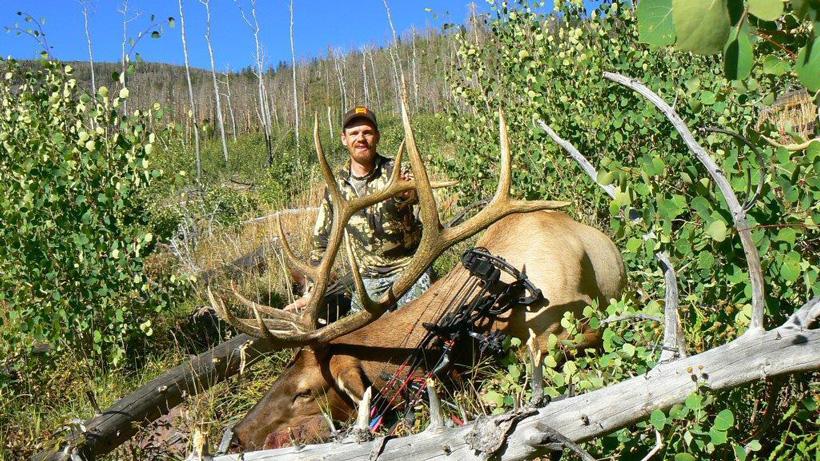
Hazen Downward and an early season archery Utah bull
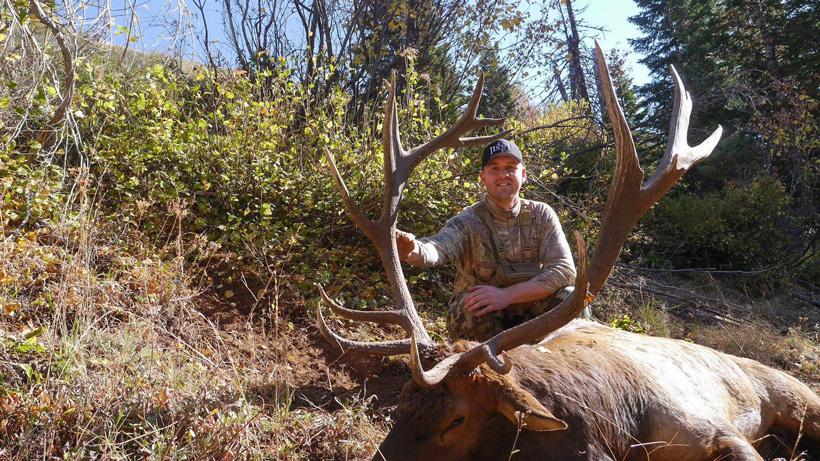
Scott Salmon and a tremendous Washington archery bull
Year | 2013 |
|---|---|
Number ofhunters | 68,572 |
Elk taken(bulls & cows) | 7,246 |
Success | 11% |
Year | 2014 |
Number ofhunters | 66,607 |
Elk taken(bulls & cows) | 6,966 |
Success | 10% |
Year | 2015 |
Number ofhunters | 68,012 |
Elk taken(bulls & cows) | 7,829 |
Success | 12% |
Year | Number ofhunters | Elk taken(bulls & cows) | Success |
|---|---|---|---|
2013 | 68,572 | 7,246 | 11% |
2014 | 66,607 | 6,966 | 10% |
2015 | 68,012 | 7,829 | 12% |
Year | 2013 |
|---|---|
Number ofhunters | 57,785 |
Elk taken | 25,968 |
Success | 45% |
Year | 2014 |
Number ofhunters | 58,266 |
Elk taken | 25,905 |
Success | 44% |
Year | 2015 |
Number ofhunters | 58,959 |
Elk taken | 24,749 |
Success | 42% |
Year | 2016 |
Number ofhunters | 58,159 |
Elk taken | 25,852 |
Success | 44.5% |
Year | Number ofhunters | Elk taken | Success |
|---|---|---|---|
2013 | 57,785 | 25,968 | 45% |
2014 | 58,266 | 25,905 | 44% |
2015 | 58,959 | 24,749 | 42% |
2016 | 58,159 | 25,852 | 44.5% |
By this point in time, most applications seasons around the West for elk are wrapping up and draw results are starting to trickle in. While the 2016 season may still be fresh in the minds of many, this is the still the perfect time to continue to plan for 2017 and as crazy as it sounds, planning for 2018. There’s no time like the present, right? Whether you are looking to expand hunting opportunities in your own state or looking to branch out to others, there are many options for elk hunters of any background throughout much of the West.
Now, the biggest factor to consider before beginning your initial research will be what exactly you're looking to get out of your hunt. Obviously, this will differ from person to person but I generally consider access, terrain, availability of tags, elk populations, hunter numbers, and overall success as some of my main factors. Others may begin to further dilute the prospective list by adding in trophy potential or specific terrain features.
The bottom-line is that no matter what you personally desire in your elk hunt the odds of finding a state or states that can be the segue to this adventure will be high. In the following article we will break down the current status of every western state including elk populations, herd health, hunter numbers, and an overall expectation of the hunt. While researching for your upcoming hunt, it will also be important to keep in mind the deadline for which you have to apply or purchase your tags in each state. All of this information can found in this recent article covering important dates in all of the western states.
The scouting and research game has been significantly simplified with our Filtering system. With this, hunters can look at every district in the state and find out exactly which districts meet their criteria based on trophy potential, draw odds, and more. Once likely hunting units have been located you can visit their respective district profiles to learn more about the immediate area and what tools you will need to be successful.
While not commonly brought up in casual conversation, the Last Frontier state does, in fact, have a huntable population of elk though the hunting can prove to be very tough. Tags are distributed through random drawings or through registration hunts that may also be subject to random drawings.
Applications are accepted between Nov. 1 and Dec. 15 of the current year for the following year’s hunting season. In other words, if you wanted to hunt in 2018 you need to apply for the hunt at the end of 2017. More on this process can be found here.
Alaska elk range. Source: Alaska Department of Fish and Game
The elk found in Alaska can be traced back to an initial transplant herd of eight Roosevelt elk from Washington’s Olympic Peninsula, though other subspecies and populations have since been supplemented to augment the herd. Body sizes will be larger than their Rocky Mountain counterparts though the antler sizes are generally much smaller. These hunts will definitely fall under the adventure category as opposed to the sustenance category. Overall, hunters experience fairly high success rates on these hunts; however, because of the delicate populations, they are often subject to emergency closures at any time. It is currently estimated that approximately 1,500 elk inhabit Alaska. In general, elk herds are doing incredibly well and growing at a fast pace, considering their short time in the state.
While this certainly isn’t a state for hunters to take the bull of their lifetime, it is definitely one that could produce the adventure of a lifetime.
2015 is the most current year of data.
Arizona is undeniably one of the best elk states in the country for trophy bulls and one place all elk hunters hope to hunt someday. Incredibly mild winters, remarkable genes, and a sound management plan have all culminated into a perfect storm for giant bulls. Some over-the-counter (OTC) tags can be found in the state but are generally used as management tools to control population distribution. Most hunters will have to hunt hard to find the caliber of bulls Arizona is known for on OTC hunts.
Arizona is a state for a hunter to begin building a plan for a hunt of a lifetime to come later down the road. Most of the premium units will take upwards of 19+ points to draw. There are marginal chances to draw these tags earlier due to recent changes in 2016 that affected nonresident tag allocation though the odds are still very steep.
When permits are drawn in Arizona, 20% of the tags will be allocated to a random draw for the highest point holders in which up to 5% are allocated for nonresidents. After that, the remaining 80% of the tags will be drawn from the remaining pool where nonresidents will again be allocated up to 5% of the available permits. Applications are submitted as early as Jan. 1 of the current year but no later than Feb. 10. You can check out the 2017 Arizona elk application strategy article here for more information. Also, you can check out your 2017 draw results here.
Another huge perk of drawing a coveted elk tag in Arizona is the fact that many tags are available during the rut, which increases the odds of hanging your tag off of a mature bull. With a major portion of the units holding high populations of mature bulls many hunters with late season permits will find bulls with broken antlers as a common occurrence—a fact that should, ultimately, be taken into consideration when selecting your hunt.
* Includes bulls, cows and calves.
2015 is the most current year of data
Currently, the population of Arizona elk is hovering around 35,000 animals. For 2017, a mild winter is predicted followed by an average spring, which means that populations will stay largely the same with some great potential for antler growth. Lucky hunters who draw their sought after permit for 2017 will be in for a great hunt with excellent trophy quality.
While often not found on the list of many hunters, California does offer the unique opportunity to hunt the Tule subspecies of elk, as well as Roosevelt and Rocky Mountain elk. In general, most of the tags will be very difficult to draw unless purchasing landowner tags, which can be costly. All of the units will be split into two separate drawing classes: by preference point and by random draw. Each specific unit will have a corresponding quota of preference point tags to be drawn and random draw tags to be drawn as set by the California Fish and Game Department. The deadline to apply for special permits is June 2 by midnight. Most units are generally draw with 90% of the tags going to preference point holders and 10% going to the random draw. Roosevelt elk can be hunted in the Norwest, Marble Mountains and Siskiyou zones and Rocky mountain elk can be hunted in the Northeastern zone.
2017 California elk hunting zones
The current population of Tule elk found in California is around 3,800 animals and the herd is continuing to grow in size thanks to conservation efforts. With drought conditions continuing to be an issue in California, some years many bulls will not reach their true potential in size. This unfortunate fact may be one that needs to be accepted; however, as California is the only state with a huntable population of Tule elk.
The Centennial State has long been the destination for many hunters, including new hunters. With ample amounts of OTC tags, unbeatable scenery, and the highest elk population of any state this is a hunt for anyone to enjoy. While at first glance the state’s seasons can be confusing, between a muzzleloader season during archery and up to five rifle seasons, hunters will enjoy some of the most well-structured hunts in the West with hunting opportunities available throughout the rut.
Colorado is nearly the perfect state for hunters to begin building points in as it will allow them to hunt yearly on OTC hunts as they accrue the required amount of points to draw their coveted tag. Prospective hunters should be aware; however, that “point creep” will play a very important role in their planning process. With Colorado’s draw tags being awarded on a preference point system—meaning the highest point holders get first dibs—hunters are now experiencing an issue where more hunters apply each year than the amount of tags that are given out. The issue in this lies in the fact that the amount of points required to draw a tag can go up by one almost every year due to the number of maximum point holders being higher than the amount of available tags. Essentially, a tag that would now take 10 years to draw may take 20 by the time you’ll get it.
In Colorado, nonresidents can draw up to 35% of a unit’s allotted tags making it one of the most nonresident friendly states in the West. Many great units for archery or muzzleloader hunters can be drawn early on with little to no points but the premium hunts during rifle season can take 15+ years to draw. Anyone interested in applying for special permits should note that all applications were due by April 4, 2017 and the official draw results should be out shortly. You can check your backdoor draw results by following the steps here. Note: There are great OTC opportunities for Colorado (that link will take you to Filtering 2.0 results for all OTC hunts). It might be a good idea to review the 2017 Colorado elk application strategy article here for more information.
There are two more units with 42:100 bull to cow ratios. You can see the full list sorted by bull:cow ratios here in Filtering 2.0.
Most hunters will tend to hunt OTC units for a few years while they continue to build points for a few years. While the first inclination may be to start stockpiling points for the top tier units, hunters should consider that point creep can make these units unattainable for years. Instead, consider using Filtering 2.0 to find units that can be drawn in two to four years and still produce bulls well above the 300” mark.
* Includes bulls, cows and calves.
With the largest elk population in the country, the approximately 276,000 elk that call Colorado home are thriving and doing excellent. The last few years have seen harsh to average winters with wet springs, which has produced some incredible antler growth and herd health. The winter for 2017 was harder than previous years, which may lead to more winter mortalities, yet the population as a whole should survive it nicely. Wolves in northern Colorado continue to be a threat to herd stability though no major implications have become apparent yet.
If you’re looking for a true western adventure with ample amounts of public land, great OTC tags, and beautiful landscapes, then Idaho may be just what you're after. With a healthy mix of "jungle", plains, and high country, Idaho has a lot to offer hunters in terms of trophy quality and hunting experiences. Nearly all of the state can be hunted during the rut with archery equipment and many rifle seasons open on Oct. 10 each year, allowing many hunters to chase bulls in what is commonly referred to as the “second rut.”
When it comes to Idaho’s tag drawing practices hunters will either love it or hate it. Essentially, Idaho utilizes a true lottery system with no preference or bonus points. A first time applicant will have the same chances and opportunities as a long time applicant. Additionally, applicants who wish to apply for moose, sheep, or mountain goat are not allowed to also apply for deer, elk, or antelope in the same year. To add a little more salt to that, the application fees are steep and nonrefundable to boot. If you can get past all of the perceived negatives of the draw system you may see a light at the end of the tunnel: The draw odds are incredible and even if you don’t draw some incredible OTC hunts can be had.
When participating in the draws, it is important to note that nonresidents are only guaranteed up to 10% of a unit’s given tags. This daunting number; however, can unknowingly play into your advantage. Thanks to Idaho’s strict guidelines for application many nonresident hunters opt out of the draw and instead look for good OTC tags. Because of this, the amount of nonresidents that apply for a given unit will sometimes fall short the 10% cap which can greatly increase your odds of success. To put it simply, if “Unit XYZ” offers 100 controlled tags, nonresidents will be granted up to 10% or 10 tags. Now, If only 5 nonresidents actually apply for the unit your odds of grabbing one of the potential 10 allotted tags just got a whole lot higher. Applications for Idaho controlled elk hunts must be submitted by June 5 at midnight. The 2017 Idaho application strategy article for elk can be viewed here.
There are five more units with 37:100 bull to cow ratios. You can see the full list sorted by bull:cow ratios here in Filtering 2.0.
Whether your future hunting plans include building points for a premium tag or not, Idaho is a great state to consider for a yearly trip. Of the state’s 98 units that offer elk hunting opportunities 87 of them offer OTC hunts with a large portion of these producing 300”+ bulls every season. As far as OTC hunts are concerned, Idaho is near the top of the list. You can see the list of OTC elk hunts on Filtering 2.0 or through this link.
The current population of Idaho elk is stable at about 125,000 animals. In some specific areas, predation by wolves has drastically reduced numbers, but, as a whole, the state's population remains very healthy. In the past few years the harvested numbers of elk (and hunters) has increased significantly and 2016 finished out in great fashion. If the area follows previous weather trends it should experience a mild winter with great moisture in the spring leading to some incredible antler growth. If you’ve ever been interested in hunting the Gem state now is the time to go!
The Big Sky State has long been a destination for many hunters with it’s generous seasons, easy to draw general tags, and all around good hunting. While the state is managed for opportunity far more than trophy, many of the general districts produce stellar bulls year after year. A wide array of terrain and topography will be encountered here, offering a hunting experience for nearly everyone. All of the state can be hunted with archery equipment during the rut with some districts also offering “backcountry” rifle opportunities beginning Sept. 15!
As stated before, Montana does very little in the way of managing districts for trophy potential. This can be great for the guys looking to hunt good bulls year after year, but also means that the waiting line for premium districts will be very, very long. Several draw districts found in the state will have unlimited tags and harvest quotas and are used purely as management tools. Basically, all you have to do is apply and you're guaranteed the tag. Montana permits are drawn using a lottery system weighted with squared bonus points. So, if you apply with five bonus points the squaring system will put your name into the hat 25 times. While generally unlikely, many premium tags have also been historically drawn on minimal points. If you plan on hunting with a few friends, party applications can increase your odds of drawing tags as well.
In Montana, all nonresidents must apply for tags whether hunting general or permit only districts. While tags can be costly ($870+), they are nearly a guaranteed draw with many leftover tags being sold every year. Nonresidents are granted up to 10% of the permits in a districts’s quota but can easily end up with none if residents fill up the spots early in the draw. Montana does not allow the purchase of bonus points only, but this can be backdoored by using their 80% refund option leaving a single yearly point costing a nonresident a total of $179. Applications for both residents and nonresidents were due by March 15 at midnight. You can check out the recent 2017 Montana Elk Application Strategy article here for a review. With that said, there are still a select few general elk combo licenses available as leftovers. You can check out this article here for more information. Also, you can check out your 2017 draw results here.
Montana is a great state to look at for someone who wishes to hunt elk every year whether it be with archery equipment during the rut or with a rifle during the late season. Vast amounts of public land, incredible scenery, and easy to acquire tags make for a great hunting destination.
2015 is the most current year of data.
Currently, Montana has the second highest population of elk of any of the western states at approximately 160,000 animals. Very mild winters and wet springs have been common over recent years leading to some incredible horn growth and calf survival rates. 2016 saw several bulls over 400” taken by bowhunters, including a 430 0/8” net typical that is the new world record typical for archery. 2017 should be another great year for hunters and should yield some great opportunities for anyone.
The Silver State boasts some the highest percentages of trophy bulls with nearly 40 bulls being entered into the B&C records books since 2010. Mild winters and long growing seasons are generally present throughout the entire state though some areas still have drought conditions, the majority of the state is fairing very well. A wide array of terrain and topography will be found here, providing ample amounts of opportunities for any lucky tag holders.
With less than half of the Nevada’s units featuring elk tags, the competition can be incredibly high which is only compounded if you are a nonresident. Nevada is a bonus point state meaning that permits and tags are drawn on a lottery system that is weighted by an individual's amount of bonus points held. Like Montana, these points are also squared, meaning that if you apply with five bonus points the squaring system will put your name into the hat 25 times. When applying in Nevada you are given five hunt choice to fill out, which are essentially your top five choices. Obviously, at this point it is important to list your top unit choice for your first choice.
In Nevada, all applications for elk were due by April 17 by midnight with draw results being available around the end of May. Hunters interested in building points only may purchase points without applying for tags, but this must be done by April 25. With that said, you can check out the recent 2017 Nevada Elk Application Strategy article here for a review. You can check your 2017 draw results here.
You can see the full list sorted by bull:cow ratios here in Filtering 2.0.
With the odds being so incredibly steep for drawing an elk tag in Nevada it is no surprise that many hopefuls choose to distribute their money in different states. That being said, anyone lucky enough to pull a tag in the Silver State will be awarded with one of the best elk hunts available thanks to high bull to cow ratios, huge bulls, and extremely low pressure.
Most nonresidents should expect to put in for 15+ years before expecting to have any real chance of drawing a tag. This is a state that should be considered as a once in a lifetime application.
Nevada’s current elk population is hovering around 16,000 animals and doing great, but a slight decrease in population was noted from 2015 to 2016. With recent mild winters herds have been thriving with high calf survival rates. Still, the opportunity is there to find the bull of a lifetime in many of the units. Depending on the future of the drought, Nevada should provide some incredible trophy qualities for the foreseeable future.
If you’re not applying for New Mexico you should be! Along with Idaho, New Mexico is the only other state that does not use any form of bonus or preference points, which means your chance of drawing a tag is the same as anyone else. Well known for it’s incredible bulls and insanely high success rate, this is a state that is sure to provide some incredible opportunities for anyone.
With recent changes in the season structures most hunters will not be able to hunt elk in the peak of the rut with a rifle, though two units (12 and 43) do offer a relative "early" rifle opportunity at this time. Archery hunting is broken into two seasons—both pre rut and rut—and are generally centered around hunting water or bedding areas. Most rifle or muzzleloader seasons will begin Oct. 15 though some do start as early as Oct. 8. New Mexico does not use any form of bonus or preference points, which means that all tags are drawn using a lottery system. What this means for new hopeful applicants is that they will have the same odds as someone who has been applying for a lifetime. While this may seem like a raw deal for longtime appliers it will actually largely benefit everyone as you can now avoid point creep and its $13 cost to apply after refunds opens this up to anyone, essentially making this is a no-brainer.
Before building your application strategy it is important to understand how tags in New Mexico are allocated. In any given unit, 84% of the permit quota will be awarded to residents, 10% will go to resident and nonresident applicants applying with a registered New Mexico outfitter, and the remaining 6% going to nonresident applicants. This is where deciding where the ultimate goal for your hunt lies. If you are wishing to hunt with an outfitter your odds of drawing a tag will be marginally higher than someone wishing to complete the hunt in a classic do-it-yourself fashion. Applications were due on March 23. You can check out the 2017 Elk Application Strategy article here for a review and check out the 2017 draw results here.
You can see the full list of units sorted by bull:cow ratios here in Filtering 2.0.
For anyone looking to get into the application game for elk hunting this can be an incredible state to start with. While a continued investment over the years won’t help your odds because of the lottery system it will allow you skip ahead of the line and avoid sticky situations like point creep. While your odds of successfully drawing a tag will remain lower than most states the $13 fee is hardly noticeable and anyone would have a hard time coming up with a reason for not applying for the Land of Enchantment.
2015 is the most current year of data.
New Mexico’s elk herd is currently holding strong at approximately 70,000 and staying very strong thanks to sound management, mild winters, and incredible genetics. In recent years, New Mexico was under extreme drought conditions and trophy quality began to lack. Thankfully, last year saw a reprieve and some much needed moisture leading to some great bulls and this next season is looking to be the same. Hunters lucky enough to draw a tag in the Land of Enchantment for the 2017 season will be in for some incredible opportunities and the potential to kill a bull of a lifetime.
Oregon, a state that commonly gets overlooked by most elk hunters, can be a great state for anyone to look into. Not only is there ample amounts of public land and OTC tags, but hunters also have the opportunity to hunt both Roosevelt and Rocky Mountain elk. Hunters will also be greeted with several different types of terrain to hunt including desert, plains, high country, and rain forests found along the western coast.
Many tags for both species are available to anyone looking to hunt elk yearly OTC (both rocky elk OTC and Roosevelt elk OTC) as well as controlled hunt tags. Oregon uses a modified preference point system with a portion of a unit’s permits going to the highest point holders and a portion going into a random draw. Bulls can be hunted through the rut on general archery tags with most rifle seasons generally lasting a week and landing in late October and early November. Controlled hunts are available for archery, muzzleloader, and rifle.
When applying for Oregon it's important for hunters to pay close attention to their tag allocation. In any given unit, 75% of the permits will be awarded to the highest preference point holders and the remaining 25% will be distributed through a random draw. If any leftover tags are available from the 75% preference point pool they will be added to the 25% random draw. Nonresidents are issued a maximum of 5% of the permits for a given unit.
Jimmy Hurley and a beautiful Oregon archery bull
While the tag allocation for random draws is amongst the best odds of any state, nonresidents will also experience some of worst odds found anywhere with the 5% allocation, essentially a Catch-22. All applications were due by May 15 at midnight and any hopeful applicants must purchase a nonrefundable hunting license as a prerequisite. You can check out the 2017 Oregon Elk Application Strategy article here for a review.
With Oregon’s expensive application fees and steep draw odds many hunters will opt to hunt the general OTC tags and put application efforts into surrounding states. Hunters considering heading to the west coast to hunt Roosevelts should also note that a very large portion of privately owned timber lands will require a land access fee to hunt much of this region.
Oregon’s current elk population is approximately 115,777 animals (74,227 Rocky Mountain and 41,550 Roosevelt) and staying healthy. As with most of the northwest, mild winters in recent years have made for great survival rates and calf recruitment. Wet springs have made for some great antler growth and 2017 should see some great bulls. The current 2016 population of Rocky Mountain elk is above the management objective of 70,300. The only alarming thing to note is the calves per 100 cows ratio is at a six year low. The current calf:cow ratio is 25:100. Overall the Roosevelt elk population in Oregon is doing fairly well. The only alarming thing to note in the graph below is the rapid decrease in population from 2015 to 2016.
Utah is a great state for anyone to look at with its great growth climates, OTC opportunities, and some of the best limited entry tags in the west. Mild winters and wet springs produce some great bulls every year with 380-400” bulls an unsurprising occurrence. While the odds of drawing some of the coveted limited entry tags is very slim, the state's generous drawing practices make it possible even for low point holders.
Archery hunters will be able to hunt the rut on OTC tags with rifle seasons beginning in early October with the possibility of bugling bulls. On the limited entry hunts, any applicants who are lucky enough to draw a any legal weapon season tag can even rifle hunt bulls at the end of September offering a unique opportunity to hunt bulls in the rut and potentially harvest a giant. Utah uses a modified bonus point system that awards permits to the highest point holders as well as some in a random draw weighted by the bonus points.
As compared to other states, Utah’s drawing system can be very confusing at first glance. When breaking down the draws 50% of a unit’s permits will be given to permit holder that have the highest accruement of bonus points and the remaining 50% will be entered into a random draw. Of all of the western states utilizing bonus points combined with random draws Utah will present the best odds for low point holders while still rewarding high point holders. This will present hopeful applicants with the unique opportunity to build points for a desired unit with the possibility of cashing out early in the random draws.
Nonresidents are allocated 10% of a unit's tags as long as 10 tags are available. A great backdoor perk for nonresidents is the ability to apply for multiple species on limited entry hunts whereas residents can only apply for one species per year. Applications were due by March 2 at midnight. You can check out the 2017 Elk Application Strategy article here for a review and see the 2017 draw results here.
* NA on trophy potential = There is little-to-no trophy potential
In general, Utah can be a great state to look at for building points with a higher chance of pulling a premium limited entry tag early on through the random draws than any other state. In addition to a great draw system, Utah also offers several OTC units though most of these will generally hold a very low trophy potential. Most hunters will generally focus on surrounding states that offer OTC opportunities with better trophy qualities.
Utah’s elk population is currently sitting at approximately 68,000 animals and doing incredibly well. In recent years, the Beehive State has seen excellent snow pack and high moisture levels throughout the state leading to some incredible antler growth. While OTC units won’t benefit much from this recent moisture all of the limited entry units should provide an excellent harvest for 2017.
Seldom talked about Washington offers some great opportunities for any hunter looking to hunt elk. Most of the units will have mediocre trophy qualities though some of the limited entry units can produce some massive bulls. Lots of public land, OTC tags, and a great drawing system are just some of perks of hunting the Evergreen State.
Hunters will have the ability to hunt both Rocky Mountain and Roosevelt on OTC tags every year with the opportunity to apply for special limited entry areas as well. Tags are distributed on a random draw system weighted by bonus points that are also squared. So, if you apply with five bonus points the squaring system will put your name into the hat 25 times. While generally unlikely, many premium tags have also been historically drawn on minimal points.
A unique aspect for nonresidents to consider when applying for Washington is the fact that there isn't a specific amount of tags allocated for nonresident applicants. This means that nonresidents will have the same odds as residents in the special draws! This provides the best odds of any of the western states.
The population of Washington elk (Roosevelt and Rocky Mountain) is currently sitting at around 55,000 animals and holding steady. No major climate changes have been recorded recently which can be both bad and good news. The good news is that trophy qualities and herd health will remain largely the same with the only bad being no major spikes in antler growth have been recorded. The 2016/2017 winter has been somewhat more intense than in recent years, which may cause a higher rate of winter kill in the eastern side of the state.
When any casual conversation about western elk hunting is brought up Wyoming is always included. With it’s ample public lands, sound management, and incredible trophy qualities, this is a state everyone should be looking at. Nonresidents have to apply for general tags each year and, while some can be drawn every year, it's not guaranteed. Most prospective hunters are often intimidated by the drawing process at first glance though this can be as simple as you want it to be.
When looking at applying in Wyoming, hunters must be sure to understand the drawing practices as it can be very easy to waste money and time unnecessarily. Wyoming requires that all nonresidents apply to hunt general units or apply for limited entry units. While some areas can be drawn yearly most will require two or more preference points. The most interesting aspect of applying for limited entry tags will lie in the decision to choose from the regular draw or the special draw. More information on this system can be found in our 2017 Elk Application Strategy Guide. Also, you can check out your 2017 draw results here.
Another important factor for any hopeful applicants to consider is that Wyoming residents will be drawn for limited entry permits based on a lottery system without the use of points with nonresidents generally accounting for about 15% of the available permits. Of the tags available for nonresidents, 75% will be awarded to hunters with the highest preference points and the remaining 25% will go to a random draw. This is the same for both the regular and special draws. While lucky hunters can draw tags earlier than predicted in the random draw the odds are steep and most hunters should plan on needing to reach maximum points for their chosen unit. Careful planning will be needed, though, as point creep can ultimately play a major role in the amount of points needed to draw. Nonresident elk applications were due by Jan. 31 at midnight.
Whether you’re looking for an ultra premium permit or simply looking to experience some of the best general elk hunting in the West, Wyoming has a lot to offer. Hunters can expect some incredible trophy quality on bulls in units that only take a few points to draw with most of the top tier units requiring maximum points to draw. This is an excellent state to build points in and include in your yearly planning. While planning your hunts, take into careful consideration that nonresidents will require an outfitter or resident sponsor to legally hunt within wilderness boundaries. This can cause some serious access issues in the northwest corner of the state.
Wyoming’s elk population is currently around 83,000 and doing very well. Moisture in recent years has led to some incredible antler growth lately though the 2016/2017 winter is shaping up to be more extreme which could lead to potential winter die-offs. Impacts from snowfall will be more noticeable in the more mountainous regions found on the western side of the state. Hunters looking to hunt the Equality State should still expect some fantastic hunting in 2017.
Select state.
Select species.
Adjust the Trophy Slider to your desired size (e.g. 320”+).
Click whether you are a resident or nonresident and indicate how many points you currently possess (or you can select OTC tags further down on the filter).
Select your minimum percentage of odds for drawing the tag. This can be very good for weeding out units with unlimited (100%) tags.
Select which season(s) you wish to hunt. Have other hunts going on throughout the fall? You can also set your date parameters and Filtering 2.0 will automatically find what's in season that time of the year.
Choose what harvest percentages you would like to see in the units.
Lastly, click on any of the remaining units or click the check box to compare them and read in depth profiles containing valuable information.
Unit | |
|---|---|
Bull:cow ratio | 64:100 |
Trophy potential | 350"+ |
Unit | |
Bull:cow ratio | 57:100 |
Trophy potential | 280"+ |
Unit | |
Bull:cow ratio | 57:100 |
Trophy potential | 300"+ |
Unit | |
Bull:cow ratio | 57:100 |
Trophy potential | 260"+ |
Unit | |
Bull:cow ratio | 57:100 |
Trophy potential | 300"+ |
Unit | |
Bull:cow ratio | 57:100 |
Trophy potential | 280"+ |
Unit | |
Bull:cow ratio | 52:100 |
Trophy potential | 300"+ |
Unit | |
Bull:cow ratio | 42:100 |
Trophy potential | 340"+ |
Unit | |
Bull:cow ratio | 42:100 |
Trophy potential | 310"+ |
Unit | |
Bull:cow ratio | 42:100 |
Trophy potential | 310"+ |
Unit | |
|---|---|
Bull:cow ratio | 96:100 |
Trophy potential | 380"+ |
Unit | |
Bull:cow ratio | 63:100 |
Trophy potential | 330"+ |
Unit | |
Bull:cow ratio | 57:100 |
Trophy potential | 350"+ |
Unit | |
Bull:cow ratio | 50:100 |
Trophy potential | 330"+ |
Unit | |
Bull:cow ratio | 46:100 |
Trophy potential | 360"+ |
Unit | |
Bull:cow ratio | 43:100 |
Trophy potential | 330"+ |
Unit | |
Bull:cow ratio | 41:100 |
Trophy potential | 340"+ |
Unit | |
Bull:cow ratio | 39:100 |
Trophy potential | 320"+ |
Unit | |
Bull:cow ratio | 37:100 |
Trophy potential | 350"+ |
Unit | |
Bull:cow ratio | 36:100 |
Trophy potential | 360"+ |
Unit | |
|---|---|
Bull:cow ratio | 58:100 |
Trophy potential | 360"+ |
Unit | |
Bull:cow ratio | 49:100 |
Trophy potential | 350"+ |
Unit | |
Bull:cow ratio | 48:100 |
Trophy potential | 360"+ |
Unit | |
Bull:cow ratio | 42:100 |
Trophy potential | 330"+ |
Unit | |
Bull:cow ratio | 42:100 |
Trophy potential | 320"+ |
Unit | |
Bull:cow ratio | 42:100 |
Trophy potential | 300"+ |
Unit | |
Bull:cow ratio | 42:100 |
Trophy potential | 370"+ |
Unit | |
Bull:cow ratio | 41:100 |
Trophy potential | 360"+ |
Unit | |
Bull:cow ratio | 40:100 |
Trophy potential | 310"+ |
Unit | |
Bull:cow ratio | 37:100 |
Trophy potential | 320"+ |
Unit | |
|---|---|
Bull:cow ratio | 48:100 |
Trophy potential | 310"+ |
Unit | |
Bull:cow ratio | 48:100 |
Trophy potential | 290"+ |
Unit | |
Bull:cow ratio | 44:100 |
Trophy potential | 310"+ |
Unit | |
Bull:cow ratio | 44:100 |
Trophy potential | 310"+ |
Unit | |
Bull:cow ratio | 42:100 |
Trophy potential | 330"+ |
Unit | |
Bull:cow ratio | 42:100 |
Trophy potential | 290"+ |
Unit | |
Bull:cow ratio | 42:100 |
Trophy potential | 300"+ |
Unit | |
Bull:cow ratio | 40:100 |
Trophy potential | 320"+ |
Unit | |
Bull:cow ratio | 37:100 |
Trophy potential | 310"+ |
Unit | |
Bull:cow ratio | 37:100 |
Trophy potential | 310"+ |
Unit | |
|---|---|
Bull:cowratio | 32:100 |
General | X |
Controlled | X |
Unit | |
Bull:cowratio | 25:100 |
General | X |
Controlled | X |
Unit | |
Bull:cowratio | 24:100 |
General | X |
Controlled | X |
Unit | |
Bull:cowratio | 24:100 |
General | X |
Controlled |
|
Unit | |
Bull:cowratio | 22:100 |
General | X |
Controlled | X |
Unit | |
Bull:cowratio | 19:100 |
General | X |
Controlled | X |
Unit | |
Bull:cowratio | 18:100 |
General | X |
Controlled |
|
Unit | |
Bull:cowratio | 17:100 |
General | X |
Controlled | X |
Unit | |
Bull:cowratio | 17:100 |
General | X |
Controlled | X |
Unit | |
Bull:cowratio | 16:100 |
General | X |
Controlled | X |
Unit | Bull:cowratio | General | Controlled |
|---|---|---|---|
32:100 | X | X | |
25:100 | X | X | |
24:100 | X | X | |
24:100 | X |
| |
22:100 | X | X | |
19:100 | X | X | |
18:100 | X |
| |
17:100 | X | X | |
17:100 | X | X | |
16:100 | X | X |
Unit | |
|---|---|
Bull:cow ratio | 184:100 |
Trophy potential | 330"+ |
Unit | |
Bull:cow ratio | 98:100 |
Trophy potential | 350"+ |
Unit | |
Bull:cow ratio | 98:100 |
Trophy potential | 340"+ |
Unit | |
Bull:cow ratio | 98:100 |
Trophy potential | 350"+ |
Unit | |
Bull:cow ratio | 67:100 |
Trophy potential | 350"+ |
Unit | |
Bull:cow ratio | 67:100 |
Trophy potential | 340"+ |
Unit | |
Bull:cow ratio | 67:100 |
Trophy potential | 320"+ |
Unit | |
Bull:cow ratio | 67:100 |
Trophy potential | 350"+ |
Unit | |
Bull:cow ratio | 67:100 |
Trophy potential | 350"+ |
Unit | |
Bull:cow ratio | 65:100 |
Trophy potential | 350"+ |
Units | |
|---|---|
Bull:cowratio | 60:100 |
Trophypotential | NA |
Limitedquota |
|
General(OTC) | X |
Units | |
Bull:cowratio | 50:100 |
Trophypotential | 300"+ |
Limitedquota |
|
General(OTC) | X |
Units | |
Bull:cowratio | 47:100 |
Trophypotential | 380"+ |
Limitedquota | X |
General(OTC) |
|
Units | |
Bull:cowratio | 47:100 |
Trophypotential | NA |
Limitedquota |
|
General(OTC) | X |
Units | |
Bull:cowratio | 42:100 |
Trophypotential | NA |
Limitedquota |
|
General(OTC) | X |
Units | Nine Mile, Anthro |
Bull:cowratio | 41:100 |
Trophypotential | 350"+ |
Limitedquota | X |
General(OTC) |
|
Units | |
Bull:cowratio | 39:100 |
Trophypotential | 370"+ |
Limitedquota | X |
General(OTC) |
|
Units | Oquirrh-Stansbury |
Bull:cowratio | 35:100 |
Trophypotential | 330"+ |
Limitedquota | X |
General(OTC) |
|
Units | Fillmore, Oak Creek* |
Bull:cowratio | 33:100 |
Trophypotential | NA |
Limitedquota |
|
General(OTC) | X |
Units | |
Bull:cowratio | 33:100 |
Trophypotential | 380"+ |
Limitedquota | X |
General(OTC) |
|
Units | |
Bull:cowratio | 32:100 |
Trophypotential | 340"+ |
Limitedquota | X |
General(OTC) |
|
Units | Bull:cowratio | Trophypotential | Limitedquota | General(OTC) |
|---|---|---|---|---|
60:100 | NA |
| X | |
50:100 | 300"+ |
| X | |
47:100 | 380"+ | X |
| |
47:100 | NA |
| X | |
42:100 | NA |
| X | |
Nine Mile, Anthro | 41:100 | 350"+ | X |
|
39:100 | 370"+ | X |
| |
Oquirrh-Stansbury | 35:100 | 330"+ | X |
|
Fillmore, Oak Creek* | 33:100 | NA |
| X |
33:100 | 380"+ | X |
| |
32:100 | 340"+ | X |
|
Unit | |
|---|---|
Bull:cow ratio | 139:100 |
General | X |
Controlled | X |
Unit | |
Bull:cow ratio | 139:100 |
General | X |
Controlled | X |
Unit | |
Bull:cow ratio | 139:100 |
General | X |
Controlled | X |
Unit | |
Bull:cow ratio | 139:100 |
General | X |
Controlled | X |
Unit | |
Bull:cow ratio | 139:100 |
General | X |
Controlled | X |
Unit | |
Bull:cow ratio | 139:100 |
General | X |
Controlled | X |
Unit | |
Bull:cow ratio | 47:100 |
General | X |
Controlled | X |
Unit | |
Bull:cow ratio | 24:100 |
General | X |
Controlled | X |
Unit | |
Bull:cow ratio | 21:100 |
General |
|
Controlled | X |
Unit | |
Bull:cow ratio | 19:100 |
General | X |
Controlled | X |
Unit | |
Bull:cow ratio | 19:100 |
General | X |
Controlled | X |
Unit | |
Bull:cow ratio | 17:100 |
General |
|
Controlled | X |
Unit | |
Bull:cow ratio | 17:100 |
General | X |
Controlled | X |
Unit | |
Bull:cow ratio | 17:100 |
General | X |
Controlled | X |
Unit | |
Bull:cow ratio | 17:100 |
General | X |
Controlled | X |
Unit | |
Bull:cow ratio | 16:100 |
General |
|
Controlled | X |
Unit | |
Bull:cow ratio | 13:100 |
General | X |
Controlled | X |
Unit | |
Bull:cow ratio | 13:100 |
General | X |
Controlled | X |
Unit | |
Bull:cow ratio | 13:100 |
General | X |
Controlled | X |
Unit | |
Bull:cow ratio | 13:100 |
General |
|
Controlled | X |
Unit | |
Bull:cow ratio | 13:100 |
General | X |
Controlled | X |
Unit | |
Bull:cow ratio | 13:100 |
General | X |
Controlled |
|
Unit | |
Bull:cow ratio | 13:100 |
General | X |
Controlled | X |
Unit | |
Bull:cow ratio | 13:100 |
General | X |
Controlled | X |
Unit | |
Bull:cow ratio | 13:100 |
General | X |
Controlled | X |
Unit | Bull:cow ratio | General | Controlled |
|---|---|---|---|
139:100 | X | X | |
139:100 | X | X | |
139:100 | X | X | |
139:100 | X | X | |
139:100 | X | X | |
139:100 | X | X | |
47:100 | X | X | |
24:100 | X | X | |
21:100 |
| X | |
19:100 | X | X | |
19:100 | X | X | |
17:100 |
| X | |
17:100 | X | X | |
17:100 | X | X | |
17:100 | X | X | |
16:100 |
| X | |
13:100 | X | X | |
13:100 | X | X | |
13:100 | X | X | |
13:100 |
| X | |
13:100 | X | X | |
13:100 | X |
| |
13:100 | X | X | |
13:100 | X | X | |
13:100 | X | X |